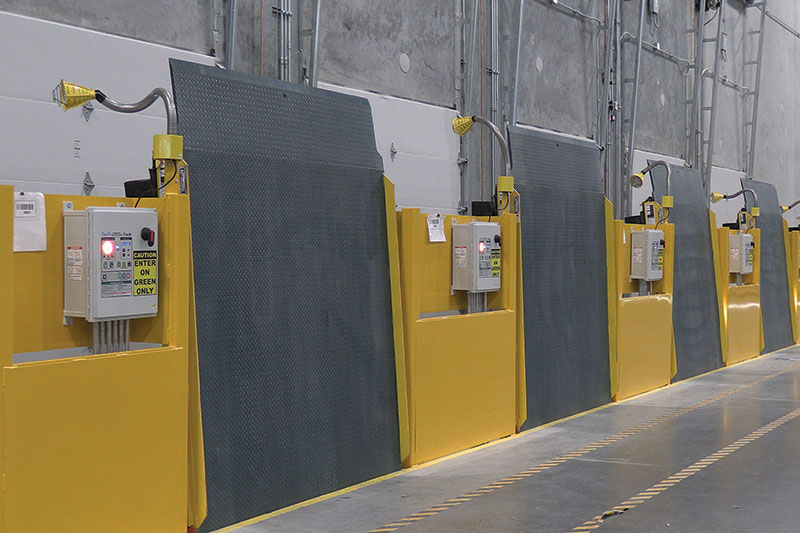Food retailer chooses highly connected dock equipment
Featuring controllers that connect to the Cloud, the equipment offers insights into loading dock activity.
New warehouses and DCs are seeking methods to improve their loading docks’ efficiency. Companies are now taking into consideration the technology offered with their loading dock equipment.
This was especially true for a large food DC as it designed its new facility, which would include 90 dock positions. While the food retailer needed loading dock levelers and vehicle restraints that were durable and reliable, it also wanted equipment that would take its operations to the next level—by connecting to the Cloud and giving it insights into its loading dock activity.
In addition to connectivity, the food retailer had to determine which data it wanted to monitor, as well as the sensors it would need to obtain that data. From a safety standpoint, it wanted to know which percentage of trailers were being restrained at each dock and be notified if a restraint was put into bypass mode.
While monitoring efficiency, the food retailer wanted to analyze forklift activity occurring in and out of the trailer and determine how much time trailers were sitting at docks before a restraint was engaged or after it was released. This analysis enables the retailer to implement modifications and ensure demurrage fees are low.
Lastly, the food retailer sought dock equipment that could report on the time doors were open, especially when a trailer wasn’t present. By reducing this unnecessary door open time, the retailer could ensure energy costs remain low, security and safety are improved, and warehouse cleanliness increases.
Ultimately, the food retailer chose dock equipment that included a package of sensors and controllers that can connect to the Cloud and software that could provide the metrics it was searching for.
Within two months of full operation in the new DC, the food retailer discovered—and then corrected—the overuse of a bypass mode at a few docks, monitored the average load time at each dock and made adjustments as needed. It learned that its doors were never unnecessarily open for more than 1% of the time, and it used its software data as a resource for any discrepancies, with regard to detention time and demurrage fees.
After realizing the benefits of technology at the loading docks, the food retailer is now considering the addition of connectivity at loading docks in its other facilities. Each of these loading docks can be set up as different locations under the same corporate account in the online dock management software.
Systems, LLC
(800) 643-5424













